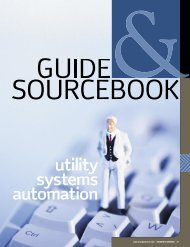asset management
asset management
asset management
You also want an ePaper? Increase the reach of your titles
YUMPU automatically turns print PDFs into web optimized ePapers that Google loves.
Managing<br />
Complexity<br />
EVERYONE KNOWS WHAT ASSET MANAGEMENT IS —<br />
THEY’RE JUST NOT SURE WHAT TO CALL IT.<br />
By Warren Causey<br />
Asset <strong>management</strong> seems to have as many names as there<br />
are vendors promoting it and utilities buying it. That’s because there<br />
is no one over-arching definition of the discipline. Is it enterprise<br />
resource planning (ERP)? Is it enterprise <strong>asset</strong> <strong>management</strong> (EAM)? Is<br />
it a system that produces process improvement from generation to<br />
the field? Is it inventory, financials, warehousing, wires and pipes, or<br />
people? What exactly constitutes an <strong>asset</strong>? Increasingly, utilities are<br />
determining that virtually everything they possess is an <strong>asset</strong> — from<br />
the information stored in automated systems, recorded on paper, or<br />
even communicated by word of mouth.<br />
The definition of <strong>asset</strong> <strong>management</strong> has shifted considerably since the<br />
early days when SAP, based in Germany, introduced the idea of “enterprise<br />
software” to U.S. companies back in the early- to mid-1990s. Considered<br />
prime targets, utilities were just coming out of a long slumber as regulated,<br />
protected, quasi-governmental organizations with great resources.<br />
Facing the very real risk of competition, utilities quickly realized that the<br />
“silo structure” of their information technology solutions wouldn’t work<br />
in the proposed new environment; nor would existing haphazard systems<br />
of locating, moving, and accounting for all kinds of <strong>asset</strong>s.<br />
Thus, SAP and other vendors began expanding their footprints to<br />
compete with SAP. They expected to take the industry by storm and<br />
eventually drive out niche players with all-encompassing, tightly integrated<br />
software packages. However, some strange things happened<br />
along the way to this planned vendor nirvana: collapse of deregulation<br />
in California; the demise of Enron and other corporate malfeasance;<br />
and the implosion of the wholesale energy market. One interesting<br />
phenomenon that resulted, besides the splintering of the enterprise<br />
<strong>asset</strong> <strong>management</strong> computing market, is most “energy companies”<br />
40 ENERGYBIZ MAGAZINE July/August 2005<br />
now want to be called “utilities” again. They also want to define,<br />
configure, and determine <strong>management</strong> of <strong>asset</strong>s on their own terms<br />
— not as some large vendors decided they should be defined.<br />
As a result, not only have SAP, Oracle, J.D. Edwards, PeopleSoft, and<br />
several others opted against creating monolithic “enterprise computing”<br />
empires at utilities, but also utility IT seems to be as splintered as ever<br />
— at least in the United States. The lineup of vendors also has changed<br />
considerably. First PeopleSoft acquired J.D. Edwards. Then Oracle acquired<br />
PeopleSoft. Traditional CIS/CRM vendor SPL WorldGroup acquired a smaller<br />
ERP/EAM vendor, Synergen, plus an OMS vendor, CES International, and<br />
now is playing in the “enterprise” <strong>asset</strong> <strong>management</strong> space.<br />
Several other ERP/EAM vendors have continued to broaden and<br />
expand their offerings to encompass more <strong>asset</strong>s. Indus International<br />
of Atlanta, for example, acquired a CIS from SCT and now calls its<br />
overall package “Service Delivery Management.”<br />
Utilities did catch on to the idea of having their systems communicate<br />
across the enterprise, but they have done so much “picking<br />
and choosing” that many enterprise or <strong>asset</strong> <strong>management</strong> vendors<br />
find themselves having to link to their competitors’ products at the<br />
same utility. One example of that trend is evident at Nashville Electric<br />
Service, which acquired Mincom software, an enterprise software<br />
vendor, and integrated it with PeopleSoft/Oracle. National Grid of New<br />
England is another case in point. Its U.S. operations run primarily on<br />
PeopleSoft, but its United Kingdom parent has a former (before the<br />
PeopleSoft merger) Oracle EAM solution. Lattice, a newly acquired gas<br />
subsidiary, employs SAP.<br />
The idea of enterprise <strong>asset</strong> or resource software has split into<br />
competing ERP and EAM paradigms. Both have enthusiastic advo-



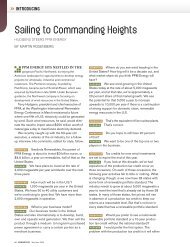
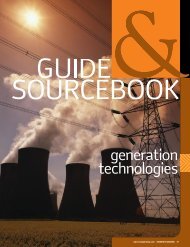
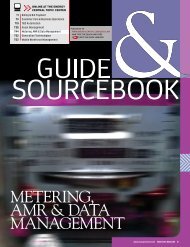

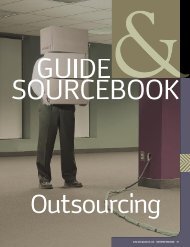
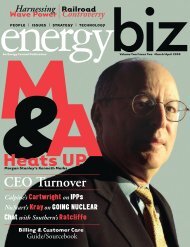

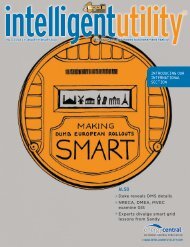

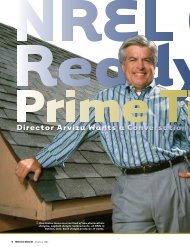
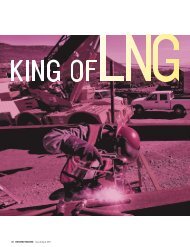


![View From the Trenches [PDF]](https://img.yumpu.com/18854438/1/190x252/view-from-the-trenches-pdf.jpg?quality=85)
